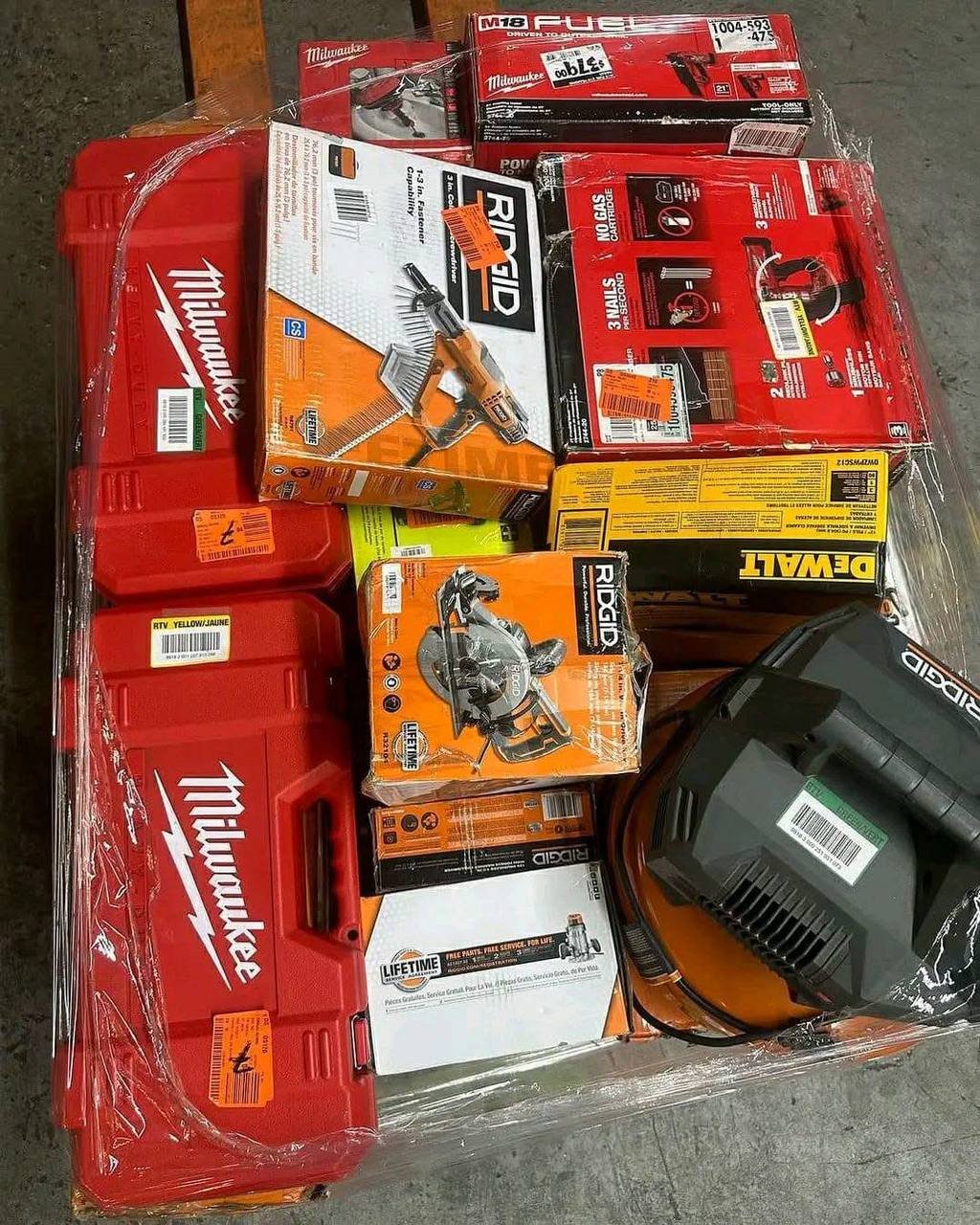A Comprehensive Guide to Hand Tools: Types, Uses, and Selection Tips.second hand pdr tools for sale
Hand tools are the backbone of many tasks, whether you’re a professional tradesperson or a weekend DIY enthusiast. While power tools have gained a lot of attention in recent decades, hand tools remain essential for precision, control, and specific tasks that require manual dexterity.
From hammers to screwdrivers, pliers to wrenches, hand tools are designed to make work easier, more efficient, and safer when used correctly.second hand pdr tools for sale
This article will provide a detailed overview of hand tools, including the different types, uses, selection tips, maintenance, and safety guidelines to help you choose and use these tools effectively.
1. What Are Hand Tools?
Hand tools are tools that are powered solely by human effort, without the use of electricity, gas, or other mechanical power sources. second hand pdr tools for sale
They are typically compact, portable, and allow for precise control over the task at hand. Hand tools have been used for thousands of years, with their evolution closely tied to human progress in construction, manufacturing, and daily life.
While power tools are often favored for their speed and convenience, hand tools excel in tasks that require finesse, accuracy, or working in tight spaces. Additionally, they are usually more affordable and require less maintenance than power tools.second hand pdr tools for sale
2. Types of Hand Tools
Hand tools can be grouped into various categories based on their function. Below are the major types of hand tools, along with examples and their typical uses.
1. Cutting Tools
Cutting tools are designed to slice, trim, or shape materials like wood, metal, or plastic. These tools typically have sharp edges that require careful handling to avoid injury.second hand pdr tools for sale
-
Hammers
Used for striking objects or driving nails, hammers are one of the most common hand tools. There are different types, including:-
Claw Hammer: For general-purpose tasks like driving nails.
-
Ball Peen Hammer: Used in metalworking for shaping and riveting.
-
Sledgehammer: Heavy-duty hammer for demolition work.second hand pdr tools for sale
-
-
Saws
Saws are used to cut through various materials like wood, metal, or plastic. Common types include:-
Hand Saw: A basic tool for cutting wood and drywall.hand tools for sale
-
Coping Saw: A fine-toothed saw used for intricate cuts in wood or metal.
-
Hack Saw: Designed for cutting metal, with adjustable frames to hold different blades.
-
-
Utility Knife
A versatile cutting tool used for scoring and cutting materials such as cardboard, plastic, and insulation. Blades are replaceable, making it an economical and practical tool.
2. Fastening Tools
Fastening tools are used to join two or more materials together, often with screws, bolts, or nails.
-
Screwdrivers
A screwdriver is used to turn screws into materials, typically wood, metal, or plastic. The most common types are:-
Flathead Screwdriver: Used for screws with a straight, flat groove.
-
Phillips Screwdriver: Designed for screws with a cross-shaped groove.
-
Torx Screwdriver: For screws with a six-pointed star-shaped groove, commonly used in automotive and electronics.second hand pdr tools for sale
-
-
Pliers
Pliers are multi-purpose hand tools used for gripping, bending, and cutting wire and other materials. Common types include:-
Needle Nose Pliers: Have a long, thin nose for precision gripping and bending in tight spaces.
-
Slip Joint Pliers: Adjustable pliers that can grasp different sizes of objects.
-
Cutting Pliers: Designed specifically for cutting wire or small metal parts.second hand pdr tools for sale
-
-
Wrenches
Wrenches are used to tighten or loosen bolts, nuts, and other fasteners. Some common types are:-
Open-End Wrench: Has two fixed, parallel jaws that fit over nuts or bolts.second hand pdr tools for sale
-
Box Wrench: A closed loop at each end that completely surrounds the nut or bolt.
-
Adjustable Wrench (Crescent Wrench): Has an adjustable jaw that can fit various sizes of fasteners.
-
3. Measuring and Layout Tools
Measuring tools are used to check the dimensions, level, and alignment of materials and projects, while layout tools help mark out shapes, sizes, or lines.
-
Tape Measure
A flexible measuring tool used to measure lengths, distances, and widths. It is typically made of a metal or fiberglass tape wound inside a casing.second hand pdr tools for sale -
Level
Used to determine if a surface is horizontal or vertical. Common types include the spirit level (with liquid-filled vials) and the laser level (which projects a level line of light). -
Square
A tool used for checking and marking 90-degree angles, ensuring accuracy when cutting wood or assembling projects.second hand pdr tools for sale -
Caliper
A precision measuring tool used for measuring the internal and external dimensions of an object, such as the thickness or diameter of an item.
4. Striking Tools
Striking tools are designed for delivering force to objects, often in demolition or construction tasks.
-
Mallet
A tool with a large, usually wooden or rubber head, used for striking objects without damaging them. It is commonly used in woodworking and assembly tasks.second hand pdr tools for sale -
Chisels
Used for carving or cutting wood, metal, or stone, chisels come in various shapes and sizes for different tasks. A wood chisel, for instance, is used for making precise cuts in wood, while a masonry chisel is designed for use with concrete or stone.
5. Other Common Hand Tools
-
Crowbar (Pry Bar)
A tool used for prying, lifting, or breaking apart materials. It’s commonly used in demolition work. -
Hand Planer
A tool used for smoothing and leveling wood surfaces, typically with an adjustable blade to control the depth of cuts. -
File
A tool with a rough surface used for smoothing or shaping materials like wood, metal, or plastic.second hand pdr tools for sale
3. How to Choose Hand Tools
Selecting the right hand tools depends on your specific needs and the types of tasks you intend to perform. Here are some factors to consider when purchasing hand tools:
-
Quality and Durability
Hand tools should be durable enough to withstand the stress of regular use. Look for tools made from high-quality materials like chrome vanadium steel, which resists rust and corrosion, or high-carbon steel, which holds an edge well. -
Ergonomics
Comfort is key, especially if you’ll be using the tool for extended periods. Look for handles with ergonomic designs that reduce hand strain. Rubberized or textured grips can also help with comfort and prevent slipping. -
Size and Weight
Consider the weight and size of the tool. Some tasks may require a more compact or lightweight tool, while others may require something larger for more force. For example, a lightweight hammer might be better for precise tasks, while a heavier sledgehammer is ideal for demolition. -
Brand Reputation
Brands like Craftsman, Stanley, DeWalt, Milwaukee, and Makita have built strong reputations for producing high-quality hand tools. While higher-end tools often come at a premium price, they are generally built to last and perform better. -
Tool Kits
Many hand tools come in toolkits or sets, which can be an excellent way to ensure you have the right tool for a variety of tasks. Kits often offer savings compared to buying tools individually, but be sure the kit includes the essential tools you’ll use most frequently.
4. Hand Tool Maintenance and Safety
Proper maintenance and safety are crucial for keeping hand tools in good condition and using them effectively.second hand pdr tools for sale
Maintenance Tips:
-
Keep Tools Clean
After each use, clean your tools to remove dirt, grime, and debris that could cause wear over time. Wipe metal surfaces with a cloth and apply oil to prevent rusting. -
Sharpen Blades
Cutting tools like saws, knives, and chisels need to be sharpened regularly to maintain cutting efficiency. You can use sharpening stones, files, or even specialized sharpeners. -
Tighten Loose Parts
Ensure that screws, bolts, or other fasteners on your tools are tightened regularly. Loose components can affect the tool’s performance and even lead to accidents. -
Store Properly
Store your tools in a dry, cool place to prevent rust and corrosion. Use a tool chest, pegboard, or tool bag to keep them organized and easy to access.second hand pdr tools for sale
Safety Guidelines:
-
Wear Protective Gear
Always wear appropriate safety gear such as goggles, gloves, and ear protection when using hand tools, especially those that generate sparks, debris, or noise. -
Inspect Tools Before Use
Check tools for any damage, such as cracks in handles, loose parts, or rust on metal components. Damaged tools should be repaired or replaced before use. -
Use the Right Tool for the Job
Don’t try to improvise by using a tool for tasks it wasn’t designed for. For example, using a screwdriver as a pry bar can lead to tool failure or injury.

5. Conclusion: The Importance of Hand Tools
While power tools may take the spotlight for large, heavy-duty tasks, hand tools remain an indispensable part of every toolbox.second hand pdr tools for sale
They provide precision, control, and reliability, making them essential for tasks that require skill and accuracy. Whether you’re completing a simple DIY project or performing professional work, the right hand tools will make your tasks easier, faster, and safer.








Reviews
There are no reviews yet.